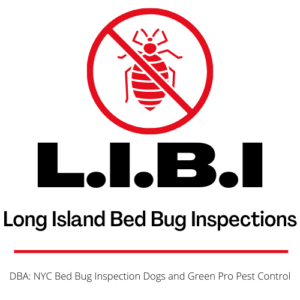One of the most annoying things about bed bugs is their talent for hiding. As if the biting and the blood drinking weren’t bad enough, a colony of bed bugs can evade detection for months. Effectively feeding and breeding right under our noses until their numbers become to great to ignore. That’s why early detection is critical to battling these household pests.
But that talent for hiding can make early detection difficult. More often than not the first sign of a full-on bed bug infestation is the feeding frenzy. It’s not until we start to feel the bite of the bed bug that we notice we’re sharing our home with parasites. That’s one of the reasons tracking and monitoring bed bug activity in your home is so important.
Monitoring Bed Bug Activity
I’m sure the first question you have is “Do bed bug traps really work?”. It’s a fair question so let’s have a bash at answering it. The short answer is “yes”, bed bug traps do work. However, these traps are less about eliminating bed bugs from your home and more about monitoring the behavior of those bed bugs.
In most cases it will require a professional bed bug removal service to totally eliminate a bed bug infestation. But traps can be powerful tools in the fight against bed bugs. They can help you identify an infestation, confirm bed bug activity in the home, and locate any hot spots so your pest control expert knows where to concentrate their efforts.
Making a DIY Bed Bug Trap
Before we dig into how to make your bed bug trap let’s talk a bit about the kind of trap we’re going to build. First of all there are two types of bed bug traps. Active traps and passive traps.
Active traps are designed to attract bed bugs and are best left to the professionals. Passive traps are placed in common bed bug travel paths and are designed to capture bed bugs when they come out to feed.
We’re going to look at two simple to build passive traps. These are perfect for do-it-yourselfers and can easily be deployed around your home.
Interceptor Cups
Interceptor traps are designed to capture bed bugs as they move from their hiding places to their food source. These traps are built on the principle that bed bugs are able to travel over rough textured surfaces but struggle to climb up steep smooth surfaces.
Our first DIY trap is an interceptor cup, and it is based on research from Rutgers New Jersey Agricultural Experiment Station. To build your own bed bug interceptor trap you will need the following items:
- 2 large pet food bowls (you will want to use the type with 2 recesses and divider down the center)
- Cloth or surgical tape
- Talcum powder
- Cotton Balls
- 4 gallon plastic container with lid
- Wooden spoon
- 150 grams of dry active yeast
- 750 grams of granulated sugar
- 3 quarts of warm water
- 4 pieces of wood
Building Your Interceptor Trap
First, you want to take the pet bowls and wrap the outside walls with tape. Make sure it fits tightly and don’t leave any gaps. This will give the bed bugs a rough surface to climb on.
Next, flip the bowls over. Using the cotton balls lightly dust the inside of the upturned bowls with talcum powder. This will help to prevent any captured bed bugs from climbing back out of the bowls. Once you’ve finished set the upside down pet food bowls to the side.
Now grab your plastic container and begin warming up your water. You want the water to be roughly 100 degrees Fahrenheit to activate the yeast. Add your yeast and sugar to the plastic container and add the water when it comes up to temperature. Stir this mixture for at least five minutes with your wooden spoon.
The mixture you are making here will release carbon dioxide, which attracts bed bugs. In fact, the carbon dioxide we exhale when we sleep is the main attractor for bed bugs looking for an easy meal. Use the container lid to loosely cover the trap when it’s not in use to keep children and pets out of the mixture.
Now it’s time to move back to the pet food bowls. Remember, they should still be upside down. Place a piece of wood on top of the bowl bottoms. This will act as a base for your container of sugar-yeast solution. Place the container on the pieces of wood and your interceptor trap is ready to use.
Using Your Interceptor Trap
It’s best to use your interceptor trap at night when bed bugs are most active. The trap will release carbon dioxide for approximately 8 hours. Bed bugs will be attracted to the carbon dioxide. They will then climb up the tape-covered walls of the pet bowls and fall into the talcum-dusted interior where they’ll be trapped and unable to climb out. In the morning you will be able to collect your captured bed bugs and either dispose of them or give them to your pest control representative for identification.
Tape and Glue Traps
If building a DIY interceptor trap seems too daunting a tape trap might be more your speed. The idea of tape and glue traps is simple. Bed bugs crawl over the trap and become stuck.
To build a tape or glue trap you will need the following:
- Duct tape or glue (depending on the type of trap you want to build)
- Several sheets of construction paper
Building Your Glue Traps and Tape Traps
Making an effective glue trap is simplicity itself. Just spread some glue over a piece of construction paper. Next, place your traps around the feet of furniture or beds. When bed bugs cross the prepared paper they will become stuck.
Making a tape trap is a little more complicated, but not by much. First, cut sections of your tape roughly the size of the paper you will be using. Next, affix these strips of tape to the paper so that the adhesive side of the tape faces out. Make several traps and set them around the feet of your bed or around sofas and upholstered chairs.
While glue traps and tape traps are easier to make it must be pointed out that they are not as effective as interceptor tapes. But they will give you a good idea of the level of infestation you may be dealing with, and they will help your pest control service identify the species of bed bug so they can more effectively treat your home.
Bed Bug Traps and Bed Bug Removal
Bed bug traps are useful tools in the fight against bed bugs. However, they cannot eliminate a full-blown infestation. These simple DIY traps can help you monitor any bed bug activity in your home, and they can help your pest control experts identify the species of bed bug they are dealing with. Ultimately though it will require the expertise and resources of a professional bed bug removal team to fully eradicate your bed bug infestation.
Published by Scott Palatnik
If you believe you’ve brought bed bugs into your home or office, give us a call, we can help!
Now with 2 locations. On Long Island @ 516-619-6149, or in NYC @ 212-299-9186
We are Long Island Bedbug Inspections.
Your Bedbug Inspection, and Elimination solution.


